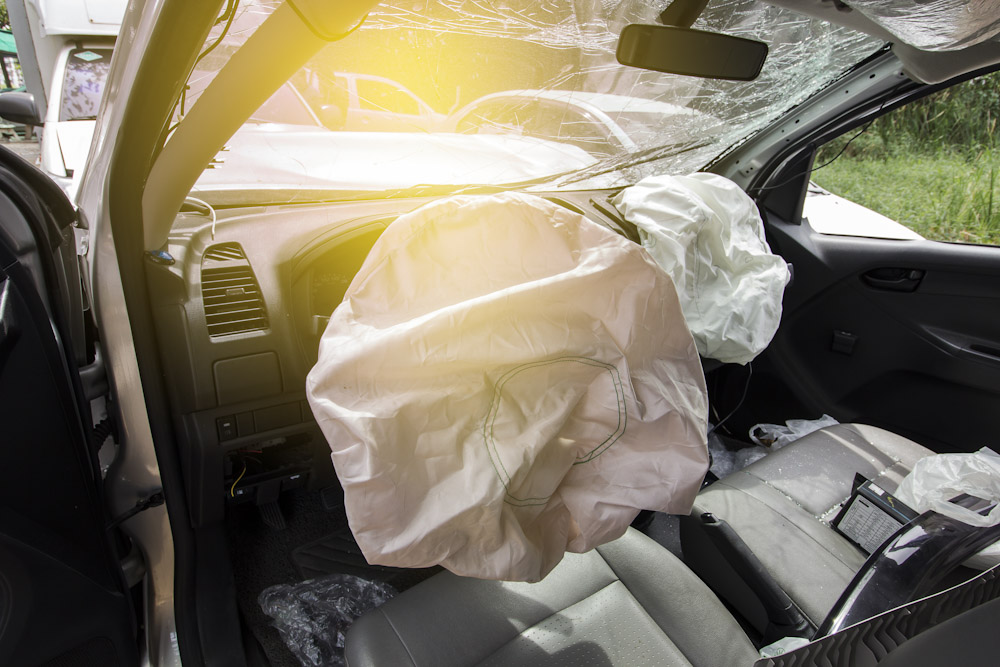
In the world of accelerated travel, whether it be by land, by sea, or by air, there is nothing more important than the safety of everyone involved. While most details are lost to time, the reports of the first car accidents in the United States are stories filled with a certain measure of chaos on the part of the drivers; cars hitting trees, cars hitting bicycles, and cars hitting pedestrians all seem correlated by that strange sense of recklessness that has apparently been a hallmark of unsafe driving since the beginning. There is even an urban legend that the first ever car accident in the United States involving two cars took place in Ohio between the only two cars in the entire state.
While there will always be those drivers who let their tardiness, their text messages, or their rage win out over their reason, there are just as many individuals looking for a car repair shop because they were victims of unfortunate circumstances outside of their control. Regardless of the cause of the accident that brought those people into Master Muffler, each driver﹘the young, the reckless, the unlucky, and the thoughtless﹘deserves to be protected from physical harm.
Essential Safety Features
In the early days of automobiles, safety features were virtually nonexistent. Car manufacturers were inexperienced in all the ways that cars would be involved in accidents and so didn’t know for which outcomes they needed to prepare. Case in point: some of the earliest car models featured a protruding metal stud in the center of the steering wheel that would prove grievous to the chest cavity if the driver lurched forward during a collision. Certainly, the damage that these studs could cause wouldn’t be something an auto repair professional could fix.
Luckily, today there is no shortage of state-of-the-art safety features available in modern vehicles. Many of these were installed in response to poor precedent, while others represent a tremendous step forward for design innovations. As far as the driver is able, these features should be bought and installed in every car.
Basic Features
These safety features are typically available in every modern vehicle, regardless of make or model. They include:
- Airbags: Arguably the most life-saving safety component in a car, it is essential to stay aware of messages from the manufacturer in the case that there is an airbag recall, which has been known to happen. Now, most cars house airbags not only in the front of the driver and passenger seats but in the sides as well.
- Traction Control: This feature is starting to become more ubiquitous with every new car, though its existence has varied in older models. Essentially, traction control is controlled either electronically or manually and limits how much wheels can spin, allowing for greater control on wet or slippery surfaces.
- Seat Belts: It’s true that when seat belts were finally installed in cars, they weren’t required by law to be worn. Today, there is a hefty fine if seat belts have either been tampered with or ignored.
Advanced Features
With new technology come new car models and new safety features. Some of these may be purchased and retrofitted onto older vehicles to give them the same advantage on the road, but many are becoming standard installs with every passing year. They include:
- Blindspot Warning: In lieu of actual tiny mirrors that can be bought and stuck to the side of the car, many new vehicles have a light that shines on the side mirrors to alert drivers of an object in their blindspot.
- Rear- and Front-facing Cameras: These cameras provide a view of what’s directly in front of and behind the car, particularly down low where the driver can’t see. These have become essential tools in keeping drivers from hitting something as they back up or pull in.
- Automatic Emergency Braking: Using the same cameras and sensors that let a driver know they are close to hitting something, many new cars will engage the emergency brake if a crash seems imminent.
- Automatic Brights: The high-beam lights are an important tool when driving at night, especially in rural areas. However, many drivers don’t turn them on early enough, or neglect to turn them off if a car going the opposite direction approaches. Having them automatically engaged means that both the vehicle’s driver and their neighbors on the road can remain safe on dark night roads.
Regardless of how new the vehicle, the auto repair specialists at Master Muffler in Brigham City can maintain it for you. By servicing your car regularly and paying attention to any abnormalities while driving, our technicians can ensure that your vehicle performs to the highest standards on the road. If we work together to keep Utah’s roads safe, we will hopefully never need to experience just how efficient today’s safety measures can be.
Related Posts
As an EV owner, understanding your vehicle's battery is critical. From its capacity to its lifespan, and everything in between, we'll guide you through what you need to know to optimize your EV experience. So buckle up and get ready - we're about to shed some light on the electrifying world of EV batteries. What [...]
If your car is running hot, it can be a sign that something’s not right with your engine. Fortunately, diagnosing the cause of an overheating engine isn't too difficult if you know what to look for and how to address it. Keep reading if you want to learn the most common issues that occur when [...]
Your vehicle's exhaust system serves a critical role in managing the byproducts of the combustion process and ensuring optimal engine performance. The appearance of colored smoke from the exhaust pipe, either when stationary or accelerating, can provide valuable clues to underlying mechanical issues. What is a car exhaust? A car exhaust is a system [...]



